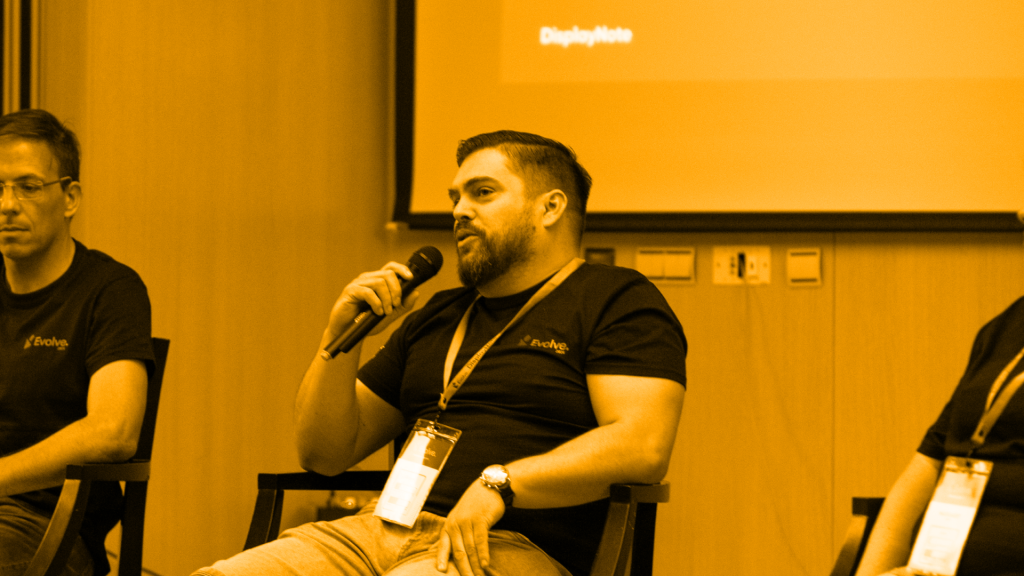
How to build a shared vision & successfully collaborate on a project.
It’s no secret that good project management is one of the cornerstones of any business. Meeting objectives depends on seeing myriad projects of varying complexity through from beginning to end. What’s just as important as project management though is project collaboration: getting the different members of every team to work together towards defined goals.
So with that in mind, we spoke with Dr Jane Lugea, editorial assistant at language magazine, Babel, to hear about how she approaches workplace collaboration projects, the importance of shared goals and building cohesion.
Interview with Dr Jane Lugea
I recently worked as a Research Assistant on a British Academy funded project, reporting to a Principal Investigator.
The two of us were examining the Deaf and Hard of Hearing (DHOH) subtitles of HBO TV series, The Wire, to see if the many omissions that were made had an effect on the way viewers might perceive characters. I ripped the subtitles to a Word document, watched a lot of The Wire, and made note of any changes between the dialogue and the DHOH subtitles using a transcription method we developed.
Any changes made were categorized according to a pre-existing model of linguistic characterisation, which lists elements of language that contribute toward the characterisation process. We were able to identify that the omissions had a detrimental effect on the viewers’ perception of the interpersonal relationships between characters and power relationships, which are particularly crucial in this television series.
How important are shared goals?
I suppose they are quite important and soon into this research project, I found that my goals deviated from the Principal Investigator’s, but we stuck to his goals as outlined in the British Academy funding grant and fulfilled the project plans.
Since then, I have gone on to develop my own research according to my personal interest in the data. I think in my field most of the research we conduct is individual so perhaps shared goals are not always an issue. However, within the teaching side of academia, shared goals are more important.
What collaboration technologies do you use to work with off-site colleagues and manage the projects?
I use Dropbox an awful lot, as I was never good at keeping a USB stick! This is particularly useful for compiling, Babel, a magazine I work on as Editorial Assistant. Myself, the editors and designers can manage and collaborate together through Dropbox.
Who, if at all, sets and monitors goals?
Well in the only collaborative research project I’ve conducted, the Principal Investigator set the research goals and as the funding was provided by the British Academy, they ensured that we stuck to the remit. As Editorial Assistant on Babel, the editors have made their goals clear for the magazine. When it comes to the daily running of the magazine, I have quite a lot of freedom, but I do check with them every now and again if there is a difficult call to be made.
Any hints and tips to build trust and organisational cohesion in terms of workplace collaboration?
It may be a cliché, but communication is key; open, clear and transparent lines of communication.
How important is the team?
I think it’s very important and I’m lucky enough to work with a great team of academic staff in the Linguistics and Modern Languages department at the University of Huddersfield. Although our research work might be quite individual, with sporadic collaborative ventures, it is important to have a positive and active research environment to bounce your ideas off others and have a support network. It is in the teaching work though, that the team is particularly important. We work together to deliver undergraduate and postgraduate courses, develop new courses, set and mark assessed work and deal with any extra admin. All of this takes a lot of coordinated effort. Again, communication is key.
How important is the shared vision?
I think it’s good that everyone on the team should have a shared vision, but in my experience there are usually certain team members who are key in driving the shared vision forward. It’s not that I’m negatively evaluating those that don’t, but some people have that kind of energy more than others. Different people play different roles in the dynamic of the team.
Want to stay in the loop?
Keep up-to-date with everything DisplayNote – including new releases, job openings, and customer giveaways.
Don’t worry, we’ll not spam you and we’ll never share your email with anyone






